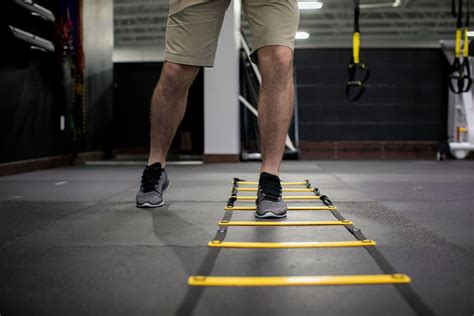Optimize workout recovery for peak performance & faster gains?

Unlock Your Full Potential: The Power of Optimized Recovery
Many fitness enthusiasts focus intently on their workouts – the reps, the sets, the intensity. While consistent training is undoubtedly crucial, true progress and sustainable performance hinge just as much, if not more, on what happens after you leave the gym. Optimized workout recovery isn’t just about feeling less sore; it’s the critical process that repairs muscle tissue, replenishes energy stores, and prepares your body for future challenges, leading directly to peak performance and faster, more noticeable gains.
Ignoring recovery can lead to overtraining, injury, burnout, and stalled progress. By strategically incorporating recovery practices, you empower your body to adapt, grow stronger, and perform at its best, consistently pushing your limits and achieving your fitness goals.

Fuel Your Comeback: Strategic Post-Workout Nutrition
What you eat after a workout significantly impacts your body’s ability to repair and rebuild. Your post-exercise nutrition should focus on two primary goals: replenishing glycogen stores (your body’s primary energy source) and providing amino acids for muscle protein synthesis.
- Protein Power: Consume 20-40 grams of high-quality protein (e.g., whey, casein, eggs, lean meats, plant-based proteins) within an hour or two post-workout. This provides the essential building blocks for muscle repair and growth.
- Carbohydrate Replenishment: Pair your protein with complex carbohydrates like sweet potatoes, rice, oats, or whole-grain bread. These help restore muscle glycogen levels, especially important after intense or prolonged exercise.
- Hydration is Key: Don’t underestimate the power of water. Rehydrate thoroughly by drinking plenty of fluids before, during, and after your workout. Electrolyte-rich beverages can be beneficial after particularly sweaty sessions.

The Ultimate Recovery Tool: Prioritizing Sleep
Sleep is arguably the single most powerful recovery tool at your disposal. During deep sleep cycles, your body releases growth hormone, which is vital for muscle repair, growth, and fat metabolism. Insufficient sleep can impair performance, increase injury risk, and hinder muscle gains.
- Aim for 7-9 Hours: Most adults need 7-9 hours of quality sleep per night. Listen to your body and adjust as needed, especially during intense training periods.
- Establish a Routine: Go to bed and wake up at roughly the same time each day, even on weekends, to regulate your circadian rhythm.
- Optimize Your Sleep Environment: Ensure your bedroom is dark, quiet, and cool. Avoid screens (phones, tablets, TV) at least an hour before bedtime.

Active Recovery and Mobility: Keep Moving Smartly
While rest is important, complete inactivity isn’t always the best approach. Active recovery and mobility work can help reduce muscle soreness, improve blood flow, and enhance flexibility.
- Low-Intensity Activities: Engage in light exercises like walking, cycling, or swimming on rest days. This promotes blood circulation without adding significant stress.
- Stretching and Foam Rolling: Incorporate dynamic stretches before workouts and static stretches afterward. Foam rolling can help release muscle knots and improve range of motion.
- Yoga and Pilates: These practices enhance flexibility, strength, balance, and body awareness, all contributing to better recovery and injury prevention.

Mind Over Muscle: Stress Management & Mental Recovery
Physical stress from training is compounded by daily life stress. Chronic stress elevates cortisol levels, which can hinder recovery, promote fat storage, and break down muscle tissue. Prioritizing mental recovery is just as important as physical.
- Mindfulness & Meditation: Practice mindfulness or meditation to reduce stress and improve mental clarity.
- Leisure Activities: Dedicate time to hobbies and activities you enjoy, allowing your mind to decompress and recharge.
- Listen to Your Body: Pay attention to signs of overtraining, such as persistent fatigue, irritability, and decreased performance. Don’t be afraid to take an extra rest day when needed.

Conclusion: A Holistic Approach to Sustained Success
Optimizing workout recovery isn’t a one-time fix but a continuous, integrated process. By consciously prioritizing strategic nutrition, adequate sleep, active recovery, and effective stress management, you create an environment where your body can not only repair but truly thrive. Embrace these recovery pillars, and you’ll not only see faster gains and enhanced performance but also enjoy a more sustainable, injury-free, and fulfilling fitness journey.





